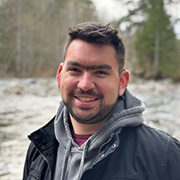A .gov website belongs to an official government organization in the United States.
A lock () or https:// means you've safely connected to the .gov website. Share sensitive information only on official, secure websites.

Oceans cover 71% of the globe and dominate natural aerosol production. Sea spray aerosols (SSA) directly influence climate through reflecting or absorbing radiation and indirectly through seeding clouds. Acting as cloud condensation nuclei (CCN) and ice nucleating particles (INPs), SSA impact cloud albedo, lifetimes, and precipitation patterns. It is vital to understand the production processes of SSA and the environmental drivers including wind speed and temperature. Despite over 50 years of investigations, SSA production fluxes remain poorly constrained, particularly among Earth system models (ESMs). This seminar will characterize how SSA production is parameterized in 17 ESMs including two models from the Geophysical Fluid Dynamics Laboratory, and present novel measurements from the Scripps Ocean-Atmosphere Research Simulator (SOARS). The ESMs investigated stem from eight indivudal parameterizations but exhibit disagreements in number flux estimates of one order of magnitude at best and seven orders of magnitude at worst. New measurements from a cutting-edge air-sea interface simulator offer updated estimates, identifying a typical underestimate of SSA in models leading to underestimates in CCN. Finally, the uncertain role of temperature on SSA production is probed, exhibiting a strong depression of aerosol production with increasing temperature. This contradicts relationships currently integrated into models and has implications for projecting changes in natural aerosol forcing under a warming climate.
Raymond Leibensperger III originally hails from Arvada, CO and received his BS in marine science and applied physics at the University of Miami. He is currently a PhD candidate at the Scripps Institution of Oceanography at the University of California San Diego. Working with Dr. Kimberly Prather & Dr. Grant Deane, Raymond has focused on understanding the drivers and parameterizations of sea spray aerosols. Through his work with the new Scripps Ocean-Atmosphere Research Simulator (SOARS), he has characterized the role of wind speed and temperature on size-resolved sea spray aerosol production fluxes and contextualized these novel measurements through comparisons to numerous Earth system models, including NOAA's GFDL models. He is expected to defend his thesis in late Spring or early Summer 2025 and is looking for postdoctoral opportunities. He's excited to pivot from measurements to natural aerosol modeling, promoting better connections between the observing and modeling communities. Additionally, as a proud member of the LGBTQIA+ community, Raymond has enjoyed promoting awareness and inclusivity of marginalized groups through his outreach with AGQ, the queer affinity group of the AGU. He looks forward to returning to his roots in CO to connect with the NOAA CSL, before heading to AGU to present related work.
ALL Seminar attendees agree not to cite, quote, copy, or distribute material presented without the explicit written consent of the seminar presenter. Any opinions expressed in this seminar are those of the speaker alone and do not necessarily reflect the opinions of NOAA or CSL.